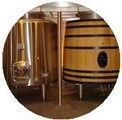Producing reds
Grape selection: after the first selection in the vineyards, once at the cellar, the grapes experience the final selection on a sorting table to get rid of any unwanted element. Destemming: berries are separated from the stems. Crushing: the grapes go through corrugated rollers that gently break the skins. Depending on the type of wine, the corrugated rollers may be adjusted to define and control the pressure. It may also occur that grapes go directly to the next step without crushing. |
| ||
Sulfiting: once in the vat, we add the adequate dose of sulphur dioxide, which is the most widely used preservative in winemaking (antiseptic and antioxidant). Vatting: to get everything ready for the alcoholic fermentation, we fill in the vats with the must together with the skins, pulp and seeds. The most commonly used are stainless steel or concrete vats. |
| ||
Maceration: apart from fermentation, another important process is taking place, which is maceration. During maceration the must improves and intensifies its colour, tannins, aromas and flavours, as these elements are in the skins, pulp and seeds with which the must is in permanent contact. For the reds meant to be aged, the maceration will be longer and we will ferment them at slightly higher temperatures, as the aim here is getting a better backbone, more polyphenols and gentle tannins. Alcoholic fermentation: during fermentation the must turns into wine thanks to the yeasts that convert sugars into alcohol. Usually at a temperature between 24ºC and 30ºC, depending on the type of wine we want to produce. Fermentation is considered finished when the quantity of residual sugar is less than 2 grams per litre. This is when we drain the free-run juice to separate the wine from all the fermentation remains (skins, seeds, etc.). | 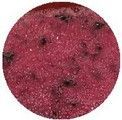 | ||
| Pressing: different presses and techniques exist to extract wine from pomace (remains of skins, stalks, pips,…). The resulting juice is called pressings (opposed to the free-run juice, which is the wine obtained during the first step). | |||
Malolactic fermentation: the acids present in wine are tartaric, malic and citric. Citric acid quickly disappears during the alcoholic fermentation, but malic acid is extremely important and plays a fundamental role in the biological stability of wine. After the alcoholic fermentation, lactic acid bacteria convert malic acid to lactic acid, which is softer. Thanks to the malolactic fermentation, wines are rounder, richer with a pleasant mouthfeel and specially enhance body and persistence. Moreover, winemakers may also decide to carry out the malolactic fermentation in oak barrels with techniques, such as battonage to get more backbone and a silkier mouthfeel. | 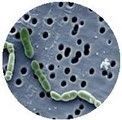 | ||
Racking: to avoid having the wine laying on the sediments that remain in the vats after a natural and spontaneous settling, the wine is racked off to another vat (leaving dead yeasts and any other solid matter behind). Fining: a fining agent (colloidal substance, which can be mineral, vegetal or animal) is added to the wine and allows any insoluble suspended matter to sink down. Afterwards, the wine is usually cold stabilized to avoid any problem of re-fermentation. | 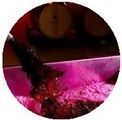 | ||
Ageing: apart from young and unoaked wines (also called new wines), there are other wines that go through a maturation process called ageing. Ageing enhances aromas, flavours and backbone, but also helps stabilizing colour. Wines are usually aged in barrels of American and French oak. Winemakers have different types of oak, barrel capacities and toasting levels to choose from. |  | ||
Bottling: once the final blend is defined and filtered to avoid any kind of contamination, the analysis must certify that the wine is stable and ready to be bottled, before doing so. After bottling, the wine is usually laid down for a few months, so that it may settle down, start releasing its aromas and flavours and also enhance its finesse. | 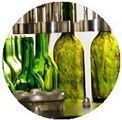 |
 Paseo de la constitución 106. 24540 Cacabelos (León) Spain
Paseo de la constitución 106. 24540 Cacabelos (León) Spain +34
+34 
 vinosdelbierzo
vinosdelbierzo




